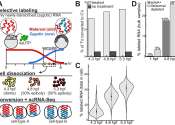'Vaults' within germ cells offer more than safekeeping
Maternal messenger RNAs (mRNAs), located within the cytoplasm of an immature egg, are crucial for jump starting development. Following fertilization, these mRNAs are passed onto the zygote, the first newly formed cell.









